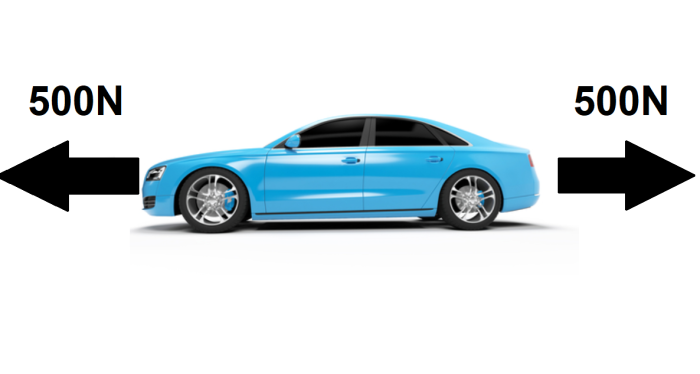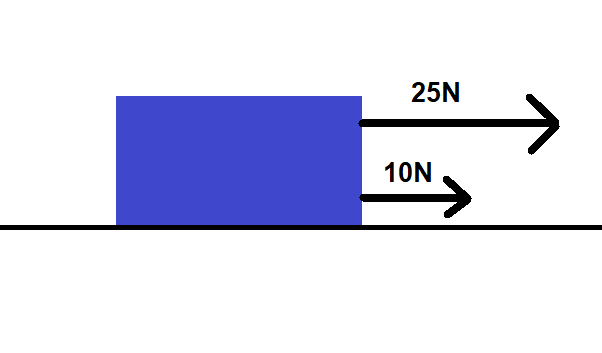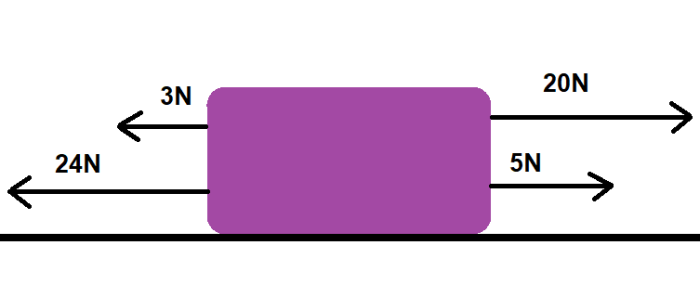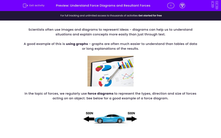Scientists often use images and diagrams to represent ideas - diagrams can help us to understand situations and explain concepts more easily than just through text.
A good example of this is using graphs - graphs are often much easier to understand than tables of data or long explanations of the results.

In the topic of forces, we regularly use force diagrams to represent the types, direction and size of forces acting on an object. See below for a good example of a force diagram.

Good quality force diagrams usually follow these rules:
Straight lines, with arrowheads, to show the direction of the force.
Labelled arrows to show the type of force, or the size of the force.
Arrows that are close to, or touch the object in the diagram.
The length of the arrow indicates the size of the force. (Note - diagrams don't need to be exactly to scale, but larger forces should still be shown with larger arrows).
One thing that force diagrams can help us to figure out, is what the resultant force on an object is. Let's make sure we are confident in our understanding of resultant forces.
The term resultant force means the overall force on an object, taking into account all of the forces acting on that object.
We can calculate the resultant force on an object, and force diagrams help us with that process. Let's look at that example from earlier.

In this example, the two forces are acting in opposite directions to each other. When forces act in opposite directions, they either partially or fully cancel each other out.
To find the resultant force when forces are acting in opposite directions, subtract the forces.
In this example, we can say that the resultant force is 500 N - 500 N = 0 N. So the resultant force is zero!
What do you think we would need to do for forces acting in the same direction?

For forces acting in the same direction, we find the resultant force by adding the forces. Let's look at an example.

In this case, two forces are acting in the same direction. To find the resultant force, we add the forces together.
25 N + 10 N = 35 N
It is good practice to state the direction of the resultant force too, when it isn't zero. So we can say that the resultant force is 35 N to the right.
What if there are multiple forces, acting in multiple directions? Let's look at one more example.

To find the resultant force in a situation like this, the best approach is to break it up into steps.
Step 1: Calculate the overall force acting left.
Step 2: Calculate the overall force acting right.
Step 3: Use your answers from Step 1 and Step 2 to find the resultant force, by subtracting.
In this example:
Overall force acting left = 3 N + 24 N = 27 N
Overall force acting right = 20 N + 5 N = 25 N
Resultant force = 27 N - 25 N = 2 N, to the left.
Let's apply what we have learnt to some practice questions!







